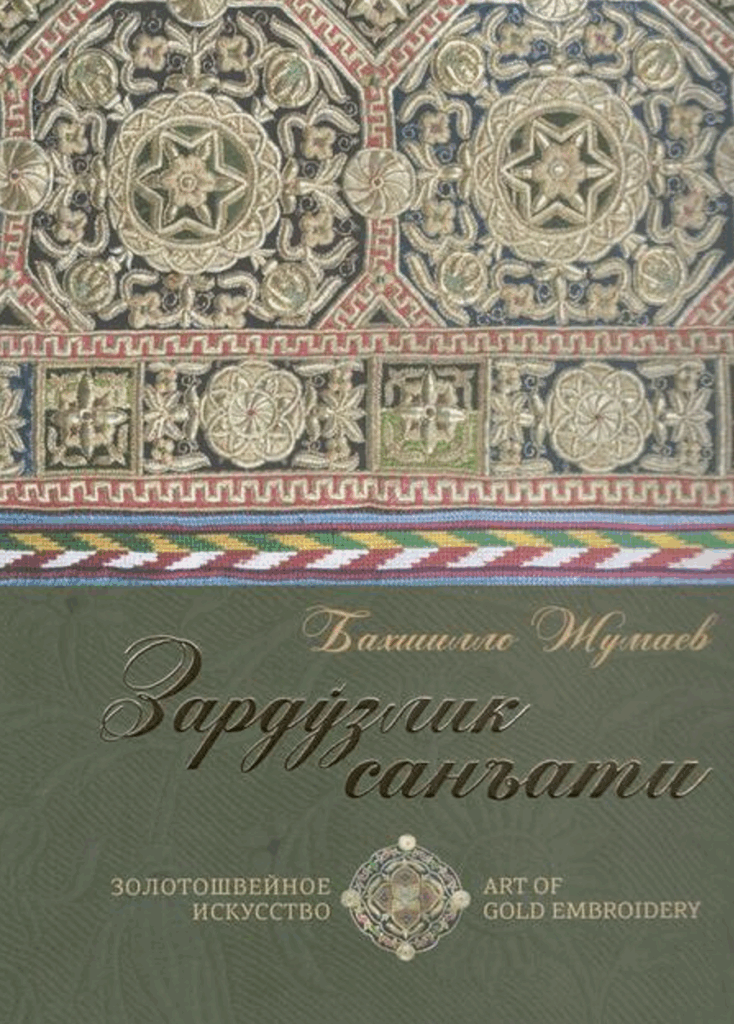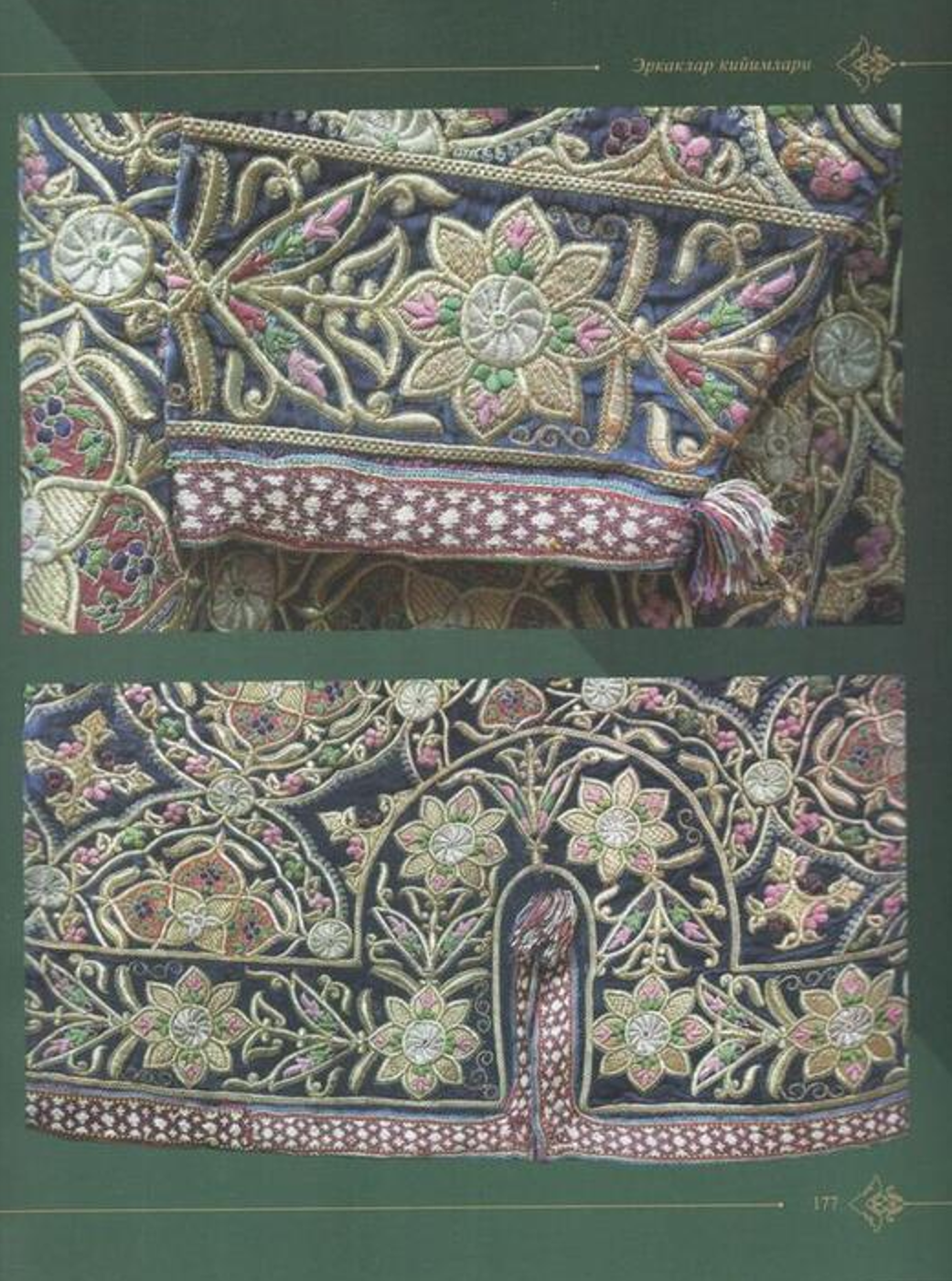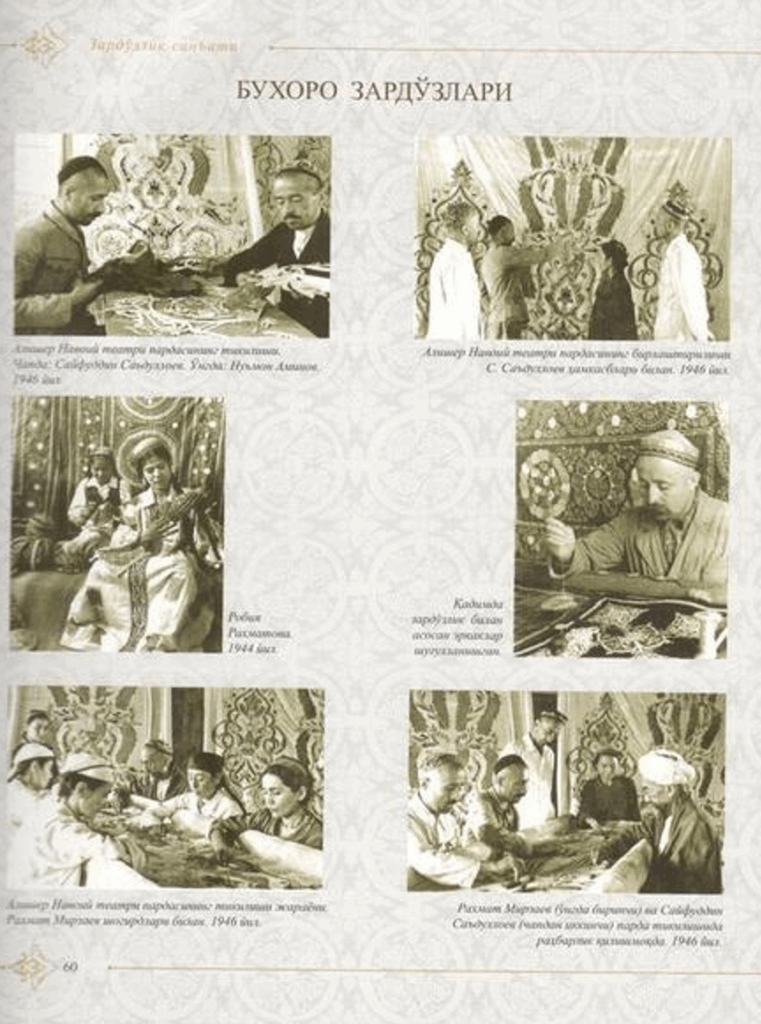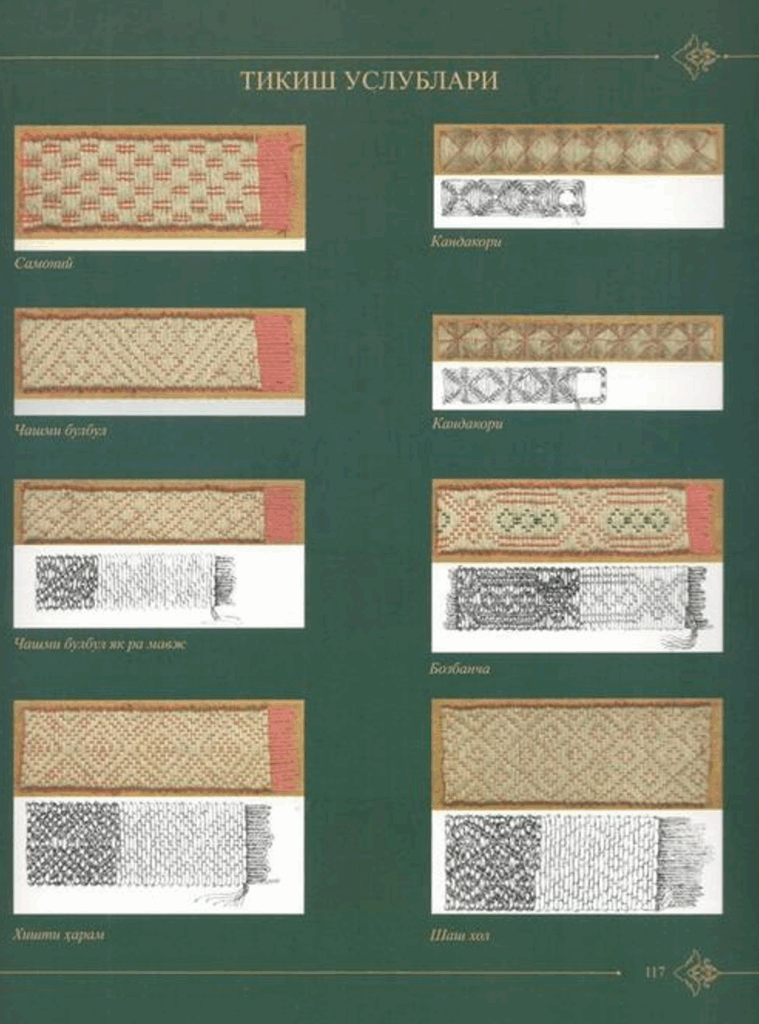We were presented with a captivating book on Uzbek Gold Embroidery at the start of the International Festival of Gold Embroidery in Bukhara, Uzbekistan. As it is only partly written in (poor) English, I thought it a good idea to write a book review. The book consists of chapters on the rich history of gold embroidery, the vibrant community of gold embroiderers in Bukhara, materials, tools, techniques, and a catalogue of both historic and contemporary masterpieces – it is a treasure trove for any embroidery enthusiast. Approximately half of the book is dedicated to stunning pictures of gold embroidery. Regrettably, only the chapters on the history of gold embroidery, the organisation of the gold embroiderers in Bukhara, and the catalogue are translated into English. Despite this, it is a book that undoubtedly deserves a place on your shelves!

The book is authored by Bakhshillo Dzhumaev (or Jumayev), a seventh-generation gold embroiderer in Bukhara who has successfully passed on the craft to his son. Although I did not have the opportunity to meet him, I did meet his son and was graciously given a tour of the family business. However, the most significant encounter was with his mother, Muqaddas Jumayeva. She patiently demonstrated some typical Bukhara techniques of gimped couching. I also had the privilege of exchanging my broche for hers, a precious memento from my journey. The Jumayev family are the epitome of gold embroidery royalty, and I am deeply honoured that they shared their knowledge and craft with me.

The chapter on the ancient history of gold embroidery mainly contains quotes from classical sources. Unfortunately, recent research has shown that we should be very careful with their interpretation. They are more likely to talk about woven textiles and not gold-embroidered textiles. However, archaeological finds from Central Asia and Uzbekistan, in particular, show that gold embroidery was known as early as the first or second century AD. Unfortunately, no reference is stated for these archaeological finds from a female grave in the Tashkent region made by M.E. Voronts. If you know of a publication, please let me know. More secure historical sources date back to the 15th century.

The chapter on the art of gold embroidery of Bukhara is a real gem. From at least the 16th century onwards, Bukhara was the region’s gold embroidery centre. There were two categories of gold embroiderers (again, a male profession with related females only acting as assistants when the workload required it): one group worked directly for the ruler in the palace workshops, and the other group worked in small family businesses located in town. In order to be able to quickly deliver larger orders, there was a labour division with many embroiderers working on the same piece. And just as is the case with medieval goldwork from Europe, pieces were not signed and almost never dated.
The embroiderers were organised in a guild with a single guild master and his assistant overlooking production. This person was called an Aksakal. He was responsible for the fair distribution of the orders amongst the guild members and acted as a mediator between the palace workshops and the many private workshops. The guild also marked births, weddings and funerals of its members. Every year in the spring, there was a kind of a trade fair or festival called Guli Surkh. The embroidery masters would present their products there.
Gold embroidery was inherited from father to son (and, in more recent times, also to daughters). If you learned from your father, you were considered a master. Sometimes, more distant relatives or the children of neighbours were also allowed to become apprentices. These apprentices went through a long training period before becoming a master. Similar to apprentices in Western Europe, they did not receive a wage but were given board and bed instead. Apprentices started with cleaning the workshop, then they were allowed to wind the broches (called patella), set up the slate frames (koruna) and finally were allowed to embroider flowers before being shown the more complicated techniques and patterns.
Interestingly, storytellers would visit the embroidery workshops once or twice a week to read the guild regulations whilst the embroiderers were working. These regulations contained a history of the craft, rules on how the embroiderers were to behave towards their customers and their apprentices, the quality of the work and materials used, the cleanliness of the embroiderer and his workshop and the prayers that needed to be said before, during and after the work. The gold embroiderers also venerate a patron saint, Hazrat Yusuf. As we know, medieval guilds also had their patron saints; one wonders if there were ‘work’ prayers said also.

Unfortunately, the materials, tools and techniques chapters do not come with an English translation. Neither do the many biographies of past and present gold embroiderers featured in the book. It has proven rather difficult to translate these parts from Uzbek into English. My normal method does not seem to work as Uzbek is too obscure a language. Nevertheless, I will try to find out what is written here as I have a feeling that it is quite important.
The second very important thing that eludes me at the moment is where to get the book. It has an ISBN number (978-9943-8192-9-0) but a search on the web does not return anything. A google image search of the cover did not return anything either. The publisher is Sahhof in Tashkent. And again, a search does not return anything. If you can offer any help here, please let me know so that I can share it with the wider embroidery community. Your assistance in this matter would be greatly appreciated!
Literature
Dzhumaev, B., 2022. Art of Gold Embroidery. Sahhof, Tashkent.
Gleba, M., 2008. Auratae vestes: Gold textiles in the ancient Mediterranean, in: Alfaro, C., Karali, L. (Eds.), Purpureae Vestes II, Vestidos, Textiles y Tintes: Estudios sober la produccion de bienes de consumo en la antiguidad. University of València, València, pp. 61–77.
